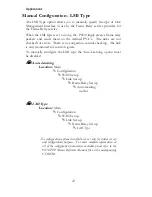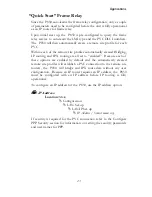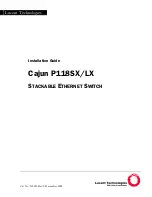
Applications
36
Define an IP Subnet Mask
An IP network may be divided into smaller portions by a process
called sub-netting. A subnet is specified using high end bits of the host
field of the IP address for network addressing. This is done with a
subnet mask. Thus, the size of the subnet (i.e. The number of bits
available for subnet addressing) is the size of the subnet mask minus
the length of the network field of the IP address for that class (8, 16 or
24 bits for classes A, B and C respectively). For example, a small
company is connected to the Internet, they are assigned a single class C
IP network address (199.169.100.0). This network address allows the
company to define up to 255 host addresses within their network.
Their network will be attached to the Internet with an IP router.
If this company decides to split their network into two LANs to
reduce the load on their network, the original IP network address may
be sub-netted into two or more smaller IP networks consisting of a
smaller number of host addresses in LAN. This allows each of the
sites to be a smaller IP network and to be routed together to allow
inter-network communication.
The P850 allows masks from 8 to 32 bits. The mask size determines
how many bits of the host field of the original IP network address will
be used for the creation of subnets. In this example, a subnet mask
size of 26 will produce a subnet size of 2 bits (24 bits from the class C
network address field plus 2 bits from the host address field). Two bits
gives 4 possible sub-network addresses from the original IP network
address. Two of the resulting sub-networks will have either all zeros or
all ones as the subnet address; under standard subnets, these addresses
are reserved for network functions and hence are invalid addresses. So
setting a mask of 26 will generate two resulting sub-networks with up
to 62 host addresses each (64 potential addresses minus the all zero
and all one addresses). The new IP network addresses will be:
199.169.100.64 and 199.169.100.128. The subnet mask for the newly
created networks will be 255.255.255.192..
Summary of Contents for PERLE P850
Page 6: ......
Page 21: ...Installation 15 Figure 1 4 Front View of the P850 router Tx Rx Power ...
Page 83: ...Octet Locations on Ethernet Frames 77 Octet Locations on a Bridged XNS Frame ...
Page 101: ...Servicing Information 95 ...
Page 106: ...100 Router A PC used for TFTP transfers Link 1 Link 2 Router B Router C ...
















































